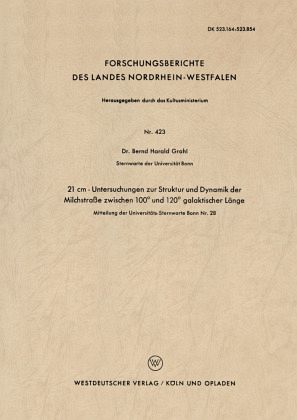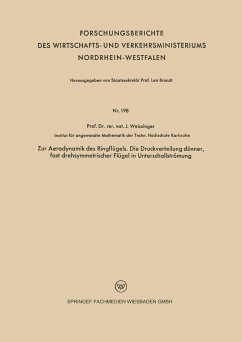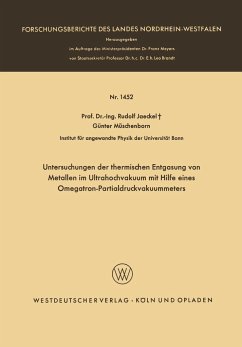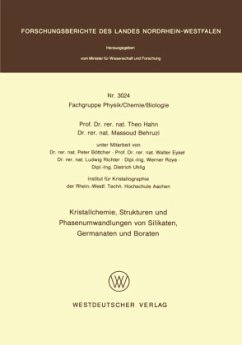
21 cm - Untersuchungen zur Struktur und Dynamik der Milchstraße zwischen 100° und 120° galaktischer Länge

PAYBACK Punkte
0 °P sammeln!
The presented 21 cm-observations consist of 61 line profiles of points 0 0 0 0 0 between 100 and 120 galactic length at + 2 , 0 , - 2 galatic lati tude each measured about three times. The whole calibrated results, reduced to the local standard of rest, are compiled in the second appendix. The reduction of these temperature-profiles for statistical motions of HI-clouds was performed by an additive analysis for gaussian components. Table 1 contains the parameters of all components of the whole program. The standard deviation mainly varies between a = 4,6 to 6,3 km/sek. Using the dates for optic...
The presented 21 cm-observations consist of 61 line profiles of points 0 0 0 0 0 between 100 and 120 galactic length at + 2 , 0 , - 2 galatic lati tude each measured about three times. The whole calibrated results, reduced to the local standard of rest, are compiled in the second appendix. The reduction of these temperature-profiles for statistical motions of HI-clouds was performed by an additive analysis for gaussian components. Table 1 contains the parameters of all components of the whole program. The standard deviation mainly varies between a = 4,6 to 6,3 km/sek. Using the dates for optical depth and internal statistical motions of an individual cloud found by absorption measurements from MULLER (1957), a figure ~ was derived from the area of each Gauß component, which is a measure for the coverage of the antenna-main lobe with clouds. Further from this an average for the density of HI-atoms is derived for each component. The velocities of the components (group-motions of the clouds) are plotted against the galactic length in Fig. 14 and 15. Using the model of M. SCHMIDT (1956) the curves for constant distance r from the sun are drawn into this diagram. But a careless conversion of the measured velocities into polar-coordinates r,l would bring strange radial struc tures. This leads to the conclusion that the motions are not fully caused by differential rotation. The observed peculiar motions range from 8 to 15 km/sek.












